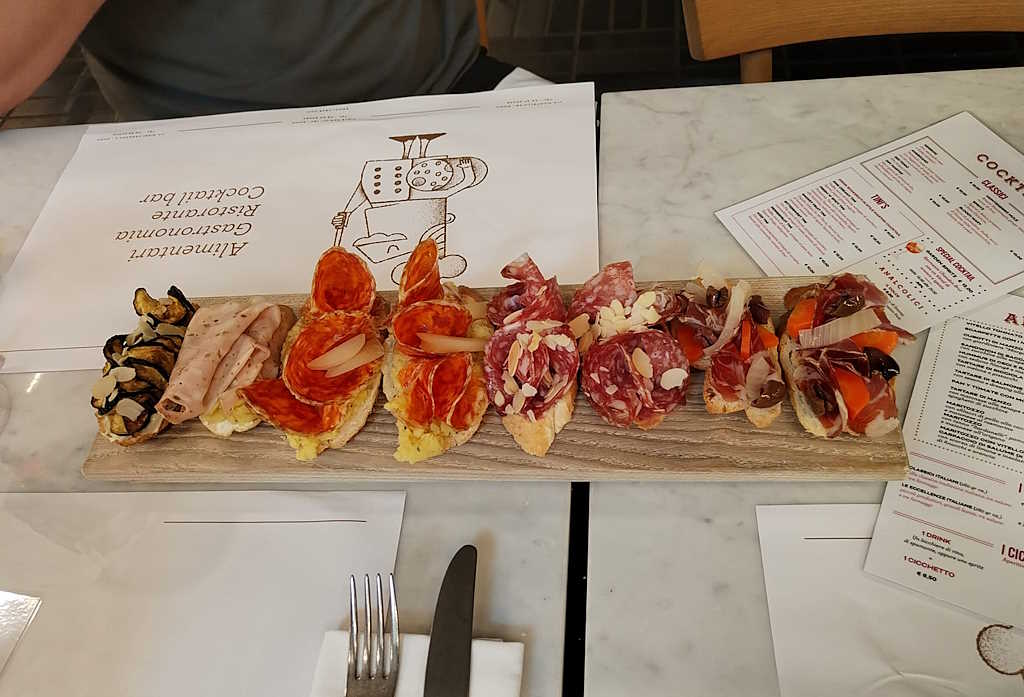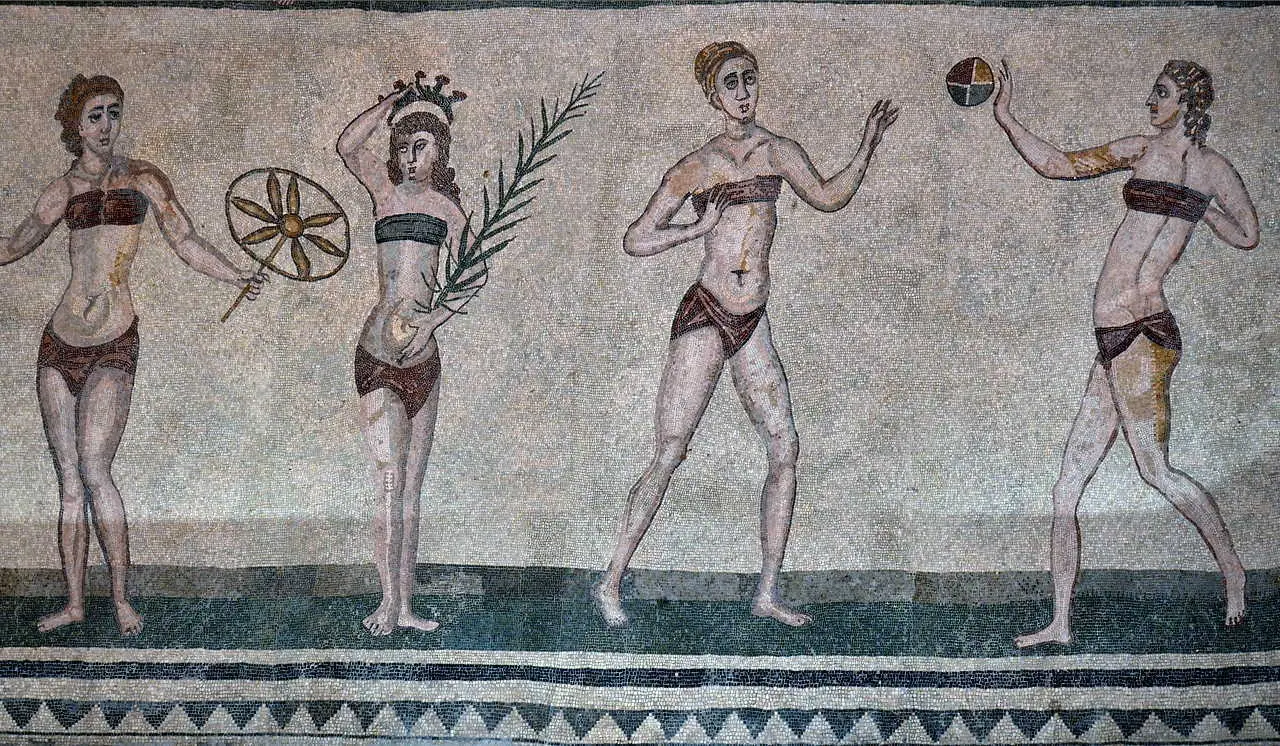The Ancient Romans at the Table
Trimalchio's
Banquet
Petronius, a writer who lived during the reign of Emperor Nero, left us with an unforgettable description of the banquet of the nouveau riche Trimalchio, a rude and exuberant guest. Even though the account is deliberately exaggerated, focusing on emphasizing the character’s vulgarity, it offers us one of the rare chances to get to know the Roman’s culinary taste.
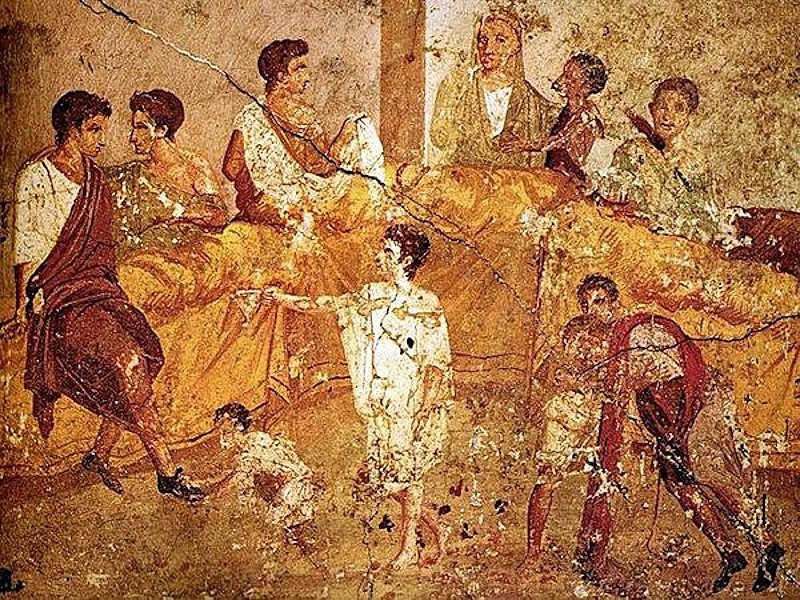
A culinary triumph
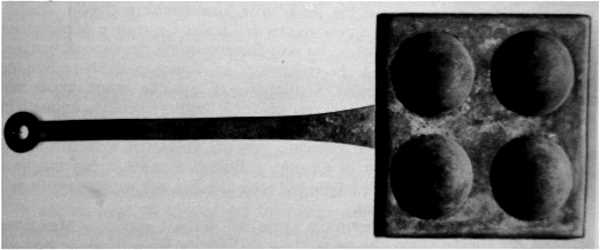
To start with the appetizers, a large tray was arranged with a bronze Corinthian donkey carrying a two-pocket pouch – one containing light olives and the other dark. Small supports on the tray held honeyed dormice covered in poppy seeds. Sausages sizzled on a silver grill while underneath, Syrian plums with pomegranate seeds roasted.
Next came a round tray with each of the twelve zodiac signs arranged in a circle, showcasing food suitable for each. Four waiters then came in to remove the top of the centerpiece, revealing poultry and sow bellies, with a winged hare in the center, made to look like Pegasus.
Following that was the serving of a large boar with a hat, with two baskets of palm leaves containing fresh and dried dates hanging from its tusks. Around the boar, pastry piglets attached to its teats indicated that it was a female.
Before Trimalchio had finished speaking, a pig was brought in, filled with sausages and black pudding that spilled out from cuts in its belly. Then came a 200-lb boiled calf with a helmet, followed by a triumph with various focaccia breads and a pastry Priapus holding fruits and grapes.
The appetizers included not the usual thrushes, but fattened hens, one for each guest, and duck eggs with hoods that Trimalchio insisted were boneless hens.
Finally, a moment of calm was granted before the dessert course, including pastry thrushes filled with raisins and nuts, and quince apples with thorns stuck in them to look like sea urchins. Of course, all of this was accompanied by abundant wine, which was even included in slave rations, usually diluted with water and often with the addition of honey, resin, or spices.
Roman chefs were skilled not only in manipulating diverse flavors but also in presenting dishes to look different from what one would expect, such as preparing pork to resemble fish or game. Petronius’ Trimalchio noted, ‘My cook made all of this out of pork. There is no more valuable person in the world. At your command, he can turn a sow’s belly into a fish, a slice of lard into a pigeon, a ham into a turtledove, and a pig’s foot into a hen.’
Federico Fellini's Satyricon
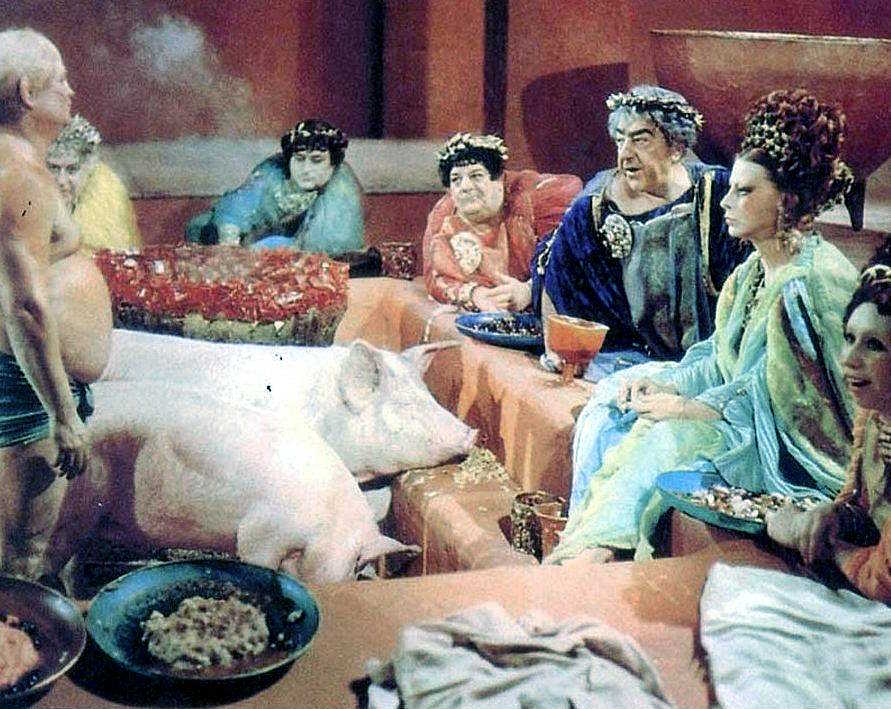
The controversial “Satyricon” by Federico Fellini is freely based on the work of Petronius Arbiter. Fellini himself described the film as a “science fiction essay of the past“. The scene of Trimalchio’s dinner is the only complete part taken from Petronius’ work. Eumolpo, drunk with the other guests, insults Trimalchio, who had boasted of being a poet and philosopher. As a result, he is captured and tortured, while Encolpio watches without intervening. Later, Trimalchio’s guests and servants stage his death and funeral, with the enriched freedman directing the entire ritual from the coffin in a surreal and decadent atmosphere.
